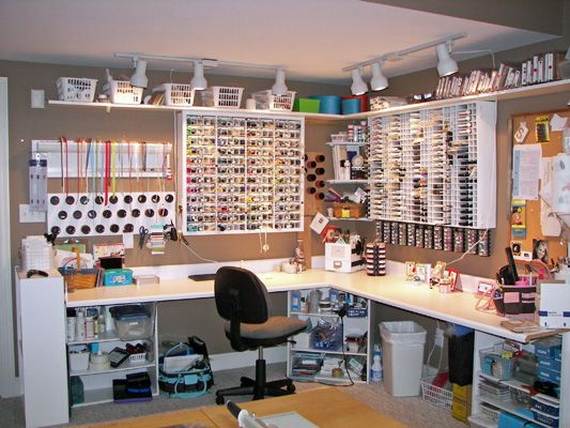
So, you've decided to start knitting. Here are some steps to help you get started. The first step is to pick a needle. The needle should pass through the middle of the first stitch. Wrap the working yarn around it clockwise. Once this is done, you'll have a loop on your right needle.
A knit stitch is purl stitch.
If you are new to knitting, you will want to learn how to knit the purl stitch. The purl stain is a basic, simple stitch that has a bump near its base. It is best to use a larger needle and bulky knitting yarn for this stitch. This will allow you to clearly see the pattern. While the basic purl stitch is difficult to knit correctly, it is possible. Before moving to larger stitches, practice with smaller amounts of stitches.
The purl stitch is essentially a mirrored version of the knit stitch. It looks like an oval with a small bump at the front and a V-shaped back. When you are working with the purl stitch be sure to look in a mirror.

Longtail cast on
Longtail cast ons are a very common technique for knitting. They are a very secure way to cast on stitches. You should ensure that you do it correctly to avoid creating loose loops in your stitches. This can be used in both knit and purl directions. To do this cast-on, leave approximately 4 inches of tails on each yarn and tie a slip knot at each end. It is not considered a stitch and is not necessary for you to count it as such.
To start a longtail cast-on, you must cast on more stitches than the original pattern calls for. The number of stitches that you will need to complete a longtail cast-on is generally four times the project's width. You can use a chart to find the number of stitches you need to cast on before casting on.
English style cast on
A cast-on English style is an excellent way to learn knitting. This creates a neat edge, and it is much easier to switch between knit or purl stitches. However, it takes more time to do than a normal casting on. At the beginning of your cast on, you must determine how much yarn you will need.
Before you decide how much yarn you want to cast, measure the length. You should leave at most three inches of tail when you're done casting on. You may need more or less yarn depending on the project. Refer to an online chart to help you plan.

Getting stitches off the needles
There are two common methods for getting stitches off the needles when starting a new knit project. The first is the standard bind off. It works well for a wide range of knitted items. Another method is a slip stitch cast off.
This type drop stitch can result in the loss of the entire pattern. This type of dropped stitch can cause your knitting to unravel.
FAQ
What are observation hobbies?
Observation hobbies can be activities that you watch people do. This could be watching sports, reading books or going on holiday. You could also observe other people.
Observation hobbies can be very beneficial because they allow you to learn how creative thinking works. You can use this knowledge later when you're working on projects for yourself or others.
You will discover that learning is easier when you are interested.
For example, if you want to know more about football, you may watch a game or read a book about it. If you want to learn more about photography, you could take or visit exhibitions.
If you enjoy playing music, you could play along to songs online or buy a guitar.
You have the option to make your own meals or take out at a restaurant if you enjoy cooking.
If you love gardening, you might grow vegetables or flowers.
If you are a fan of dancing, you can join a class or go out with your friends to learn.
If you like painting, you could paint pictures.
If you love writing, you might be interested in writing poems and stories.
You could also draw pictures if you enjoy drawing.
If you have a passion for animals, you might be able to look after them or work in a zoo.
If science is your passion, you might choose to study biology or chemistry.
History is something you might enjoy if you read books, watch movies, or listen to podcasts.
If you enjoy travelling, you might consider exploring your local area or traveling abroad.
What are some free resources I can use to learn more about hobbies
There are many websites that help people find new hobbies.
Here are some of our favorites:
www.trythisathome.com - This site provides a list of over 100 different hobbies. You can also find information about how to start each hobby.
www.hobbyfinders.org offers a huge database with thousands of activities. You can search for your interests, skills, location, and many other criteria.
www.indiebazaar.co.uk - IndieBazaar is an online marketplace designed specifically for independent artists and musicians. This site offers hundreds of products, ranging from artwork and music gear.
www.pinterest.com/explore/hobbies - Pinterest is a social media network that lets users "pin" images they find interesting onto their boards. Boards allow users to organize things they like into specific categories.
www.reddit.com/r/Hobbies Reddit allows users to share links to articles, videos and other content on their social media platforms. Voting is available for users to choose the most valuable posts.
What are some hobbies that you like?
Hobby Ideas for those who love to teach and learn.
Hobbies are a great way for you to do what you love and also learn something new.
There are many hobbies. But they all share similar characteristics. These are fun, easy activities that cost little and don't take too much effort.
They often involve helping others, such as teaching an instrument to someone or building an airplane model.
Even though you might not think of yourself to be a teacher or a tutor, chances are there are things you can do that could help someone else.
So if you want to be more creative in your life, consider starting a hobby where you can use your skills to help others.
Can I make money from my hobby?
Many hobbies can bring in extra income.
You might consider selling items that are related to your hobby if you are passionate about it.
For example, if you collect stamps, you may want to set up a website selling rare stamps.
You can make extra money without the hassle of buying and selling stamps.
You could also create a YouTube channel to talk about your hobby.
This allows you to share your passion with others and potentially generate additional revenue by offering premium content.
What does it cost to have a hobby?
Time is all that's required to make a hobby a success. It can take many years to accomplish what you desire if you are serious about it.
One thing can help you. It's called passion'. Passion will help you put in the effort to succeed.
You may become addicted to the activity once you have put in enough hours. Here is the fun part! You are now doing something that you love and getting better every day. By the end of the year you'll have probably made a lot of progress.
Don't fret about how long this takes. You can just try it. You might be surprised by what you find!
How do I find a hobby to pursue?
It can feel overwhelming to start your search for a hobby when you first begin.
You're likely thinking, "I can't be very artistic" or "I have no idea what I'm doing."
The truth is that you likely already have a lot experience in your chosen hobby.
It's just that you haven't realized it yet.
Take a look around your house. What amount of stuff do you have?
Do you have any old toys lying around that could be used?
Perhaps you own a collection or magazines.
Maybe you've always wanted to learn how to cook.
Or perhaps you would just like to learn how to play the guitar again.
Whatever it may be, you can likely turn it into something.
Realize that you have many experiences already.
And once you do, you'll be able to pick out a hobby that fits right into your lifestyle.
How can I get started in my new hobby?
It is important to choose the type of hobby you want to start.
Once you've chosen your subject, you need to be passionate about it.
It is important to know the reason you want to begin a hobby. This will help give you direction and provide a purpose.
Once you've chosen the hobby you would like to pursue you can start planning.
Consider the equipment that you will need.
You might need to consider whether you should attend classes or seminars.
Make sure you have enough space for your hobby.
You may also consider joining a club or group. These groups can offer support and guidance.
Consider how much money you would have to spend on your hobby.
Statistics
- A new survey by Pew Research Center of teens ages 13 to 17 finds that 36% of girls feel tense or nervous about their day every day; 23% of boys say the same. (pewresearch.org)
- Almost 80% of people claim to have no hobby. (hobbylark.com)
- I am 100% biologically a woman (discover.hubpages.com)
- The intensity of the dialogue partners' bond at the end of the forty-five-minute vulnerability interaction was rated as closer than the closest relationship in the lives of 30 percent of similar students. (time.com)
- The Role of the Mind in Sex, Dating, and Love: Men in the “humor” condition received phone numbers from 42.9% of the female participants and were refused 57.1% of the time. (time.com)
External Links
How To
How to learn a musical instrument
There are many options for learning how to play the piano. You could go to a school or buy a book. You could also take lessons from an experienced musician, watch videos online, and so on. Here are some tricks and tips to help you find your way.
-
Find something that interests you. You don't have to like every instrument you see. It is difficult to enjoy an instrument if it is not something you are interested in.
-
Be patient. Learning anything new takes time. It is unrealistic to expect to know everything instantly. Keep practicing each day.
-
Keep practicing regularly. This can be done even when you are tired. This will ensure you don't forget what lessons you have just learned.
-
Pick a place where you can practice. You want to be in a place where you are not disturbed by others. Also, make sure that there aren't too many distractions. For example, avoid having loud music playing nearby.
-
Have fun! Music is meant for enjoyment. So make sure that you always have fun while practicing. It will make you more motivated to keep going.
-
Set goals. You will know what you need to do if you have goals. There is no excuse for failure.
-
Keep track and keep track of your progress. Note down your successes and mistakes. You'll be able to learn and improve as you go.
-
Pause. Sometimes you just need to take a break. Taking breaks can give you the time to think.
-
Ask questions. Ask others if there are any doubts or questions regarding the instrument. They might be able to assist you.
-
Listening can teach you a lot. Many musicians love to listen to and imitate songs. This helps them understand basic concepts behind the song.
-
Read books. Watching videos or taking classes will not teach you as much as reading books. Books can also provide information that is not available elsewhere.
-
Join a band. Playing with others forces you to practice more. Plus, you'll meet people with the same interests as you.
-
Take a look at tutorials. Tutorials are videos that provide detailed explanations of various topics. These videos often focus on one aspect or part of the instrument. Tutorials can be helpful in understanding difficult parts of an instrument.
-
Explore different learning methods. Some people learn best by reading, while others prefer lectures. Experiment until you find what works best for you.
-
Practice makes perfect. It is not possible to become an expert overnight. Instead, it takes time and effort to become proficient enough for you to succeed.
-
Get along with other musicians. Listening and learning from others can help you to learn faster.